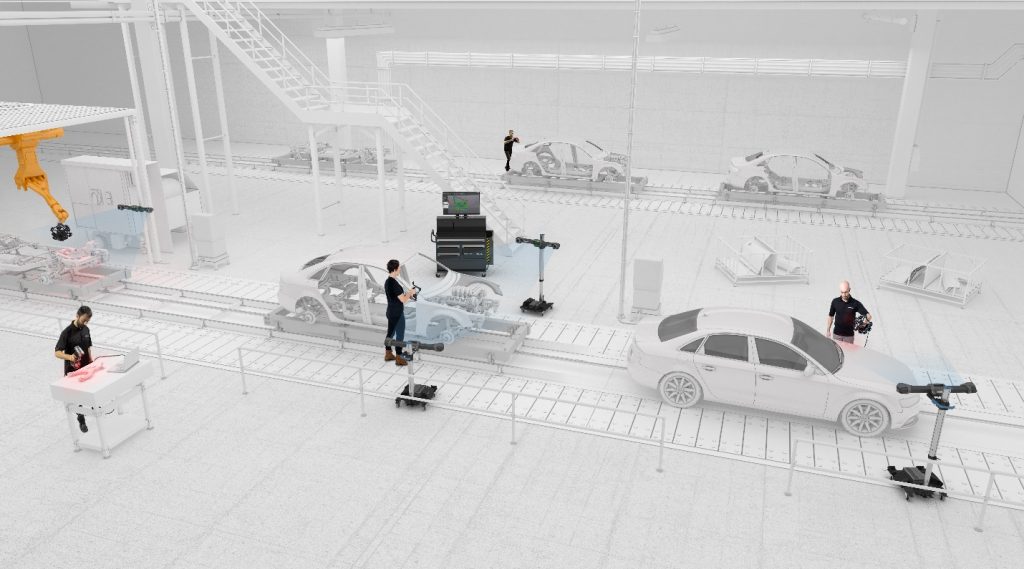Choosing the Right 3D Scanner for You
Choosing the Right 3D Scanner for You
Welcome back to Justifying 3D Scanning for your Business. This is part 2 of a 2 part series, if you haven’t read part 1 yet you can read it here. In this blog we will discuss different criteria to consider when choosing a 3D scanner.
There are many different types of 3D scanners and scanning technology. Everything from tracked 3D scanners, structured light systems to plugin-play portable 3D scanners. Below is an outline for five main criteria that will help you navigate your search.

Five Main Criteria when Choosing a 3D Scanner
Accuracy:
- For most companies, accuracy tends to be the most important feature of a 3D scanner. Opting for a scanner that offers good accuracy ensures reliable measurements and usable data. The objective is often to achieve a perfect design fit, without the need for iterations. Therefore, having accurate measurements on the first draft saves time and money.
Resolution:
- Resolution is the measurement of the smallest increment that a device can detect. Many people confused this with Accuracy, just because a system is accurate doesn’t mean it will pickup small features. The size of the feature a system can detect speaks more to the resolution of a system.
Speed
- The speed of a scanner is a combination of data acquisition rate, frame rate, processing rate and quality of algorithms; with emphasis on the latter. Many scanners post their speed in points per second or measurements per second, speed is a bigger issue to the user in the case of points per second. That means it leaves everything except the acquisition up to the computer’s processor. This creates more time in the workflow to process between each step. In this regard, the user would need a powerful computer to accompany the scanning hardware which adds time and money to the bottom line.
Versatility
- When understanding the versatility of a 3D scanner you first need to consider the lay of the land so to speak. Out of many different applications arise different challenges; size, shape, color, angles and location, all of which a scanner needs to traverse. Consider your application, are you parts large or small? Will you need to capture internal cavities? Will your operator be using it at a customer’s location or at a designated location in a factory?
Ease of Use
- Currently technology is rapidly evolving which means a steep learning curve sometimes follows. With most 3D scanning technology vendors offer training classes. But this doesn’t account for the time associated to become proficient enough to see a return on your investment. Simplicity is the key word here; some scanners are plugin-play and resilient where others are fine-tuned instruments that are affected by many factors which translates to your results.
Choosing the correct system for your application can be a daunting task but understanding these 5 criteria will improve your overall comprehension of 3D scanning technology.
The engineer’s first problem in any design situation is to discover what the problem really is.
Bob Renella
Product Manager
Computer Aided Technology, Inc

 Blog
Blog